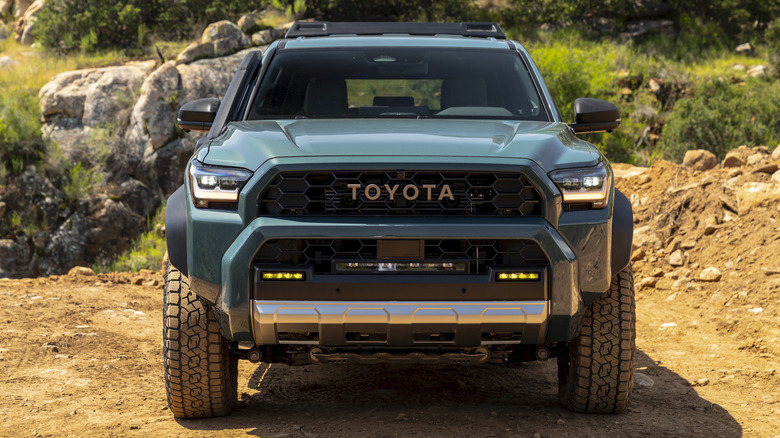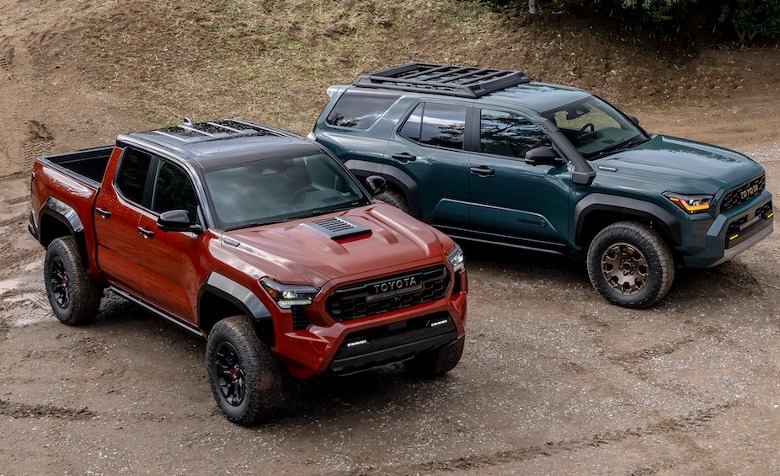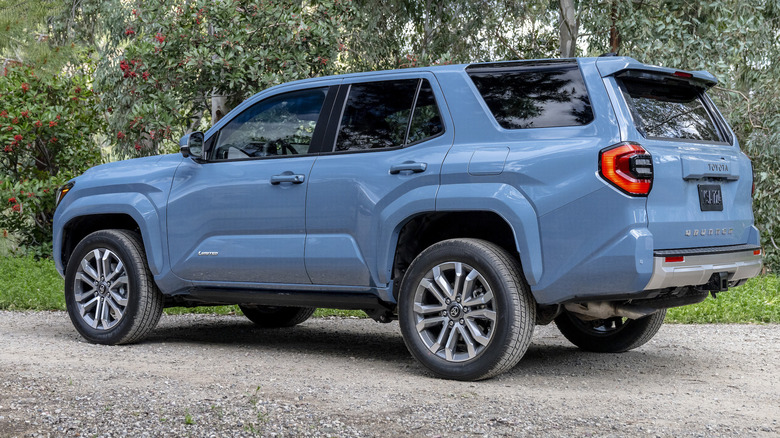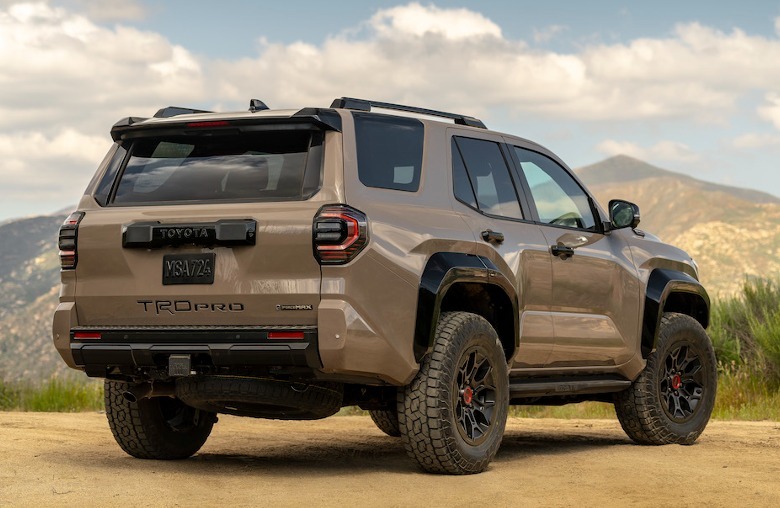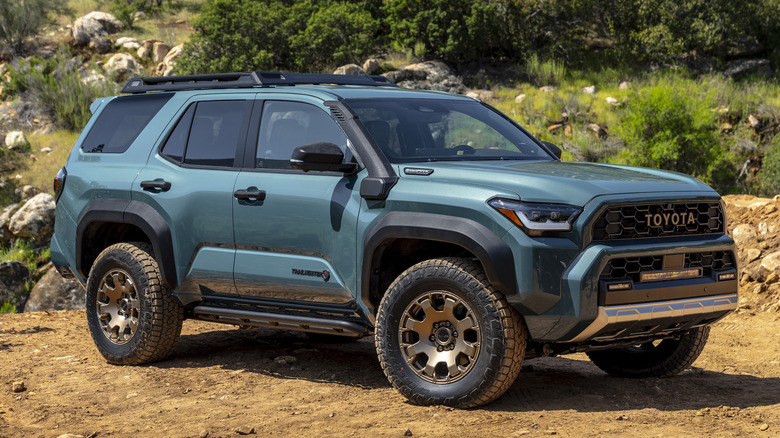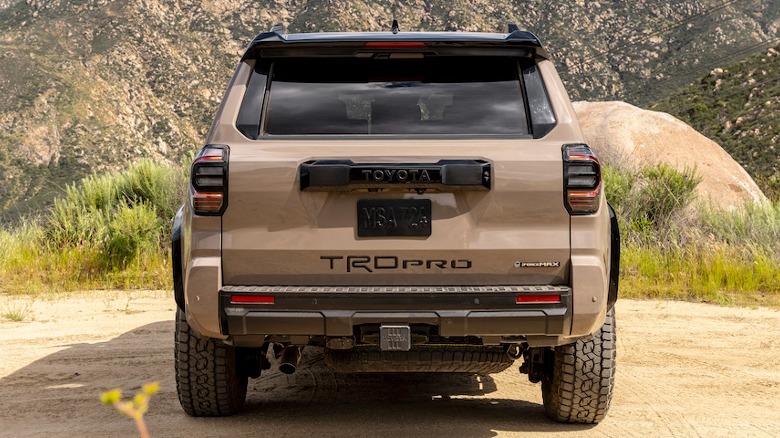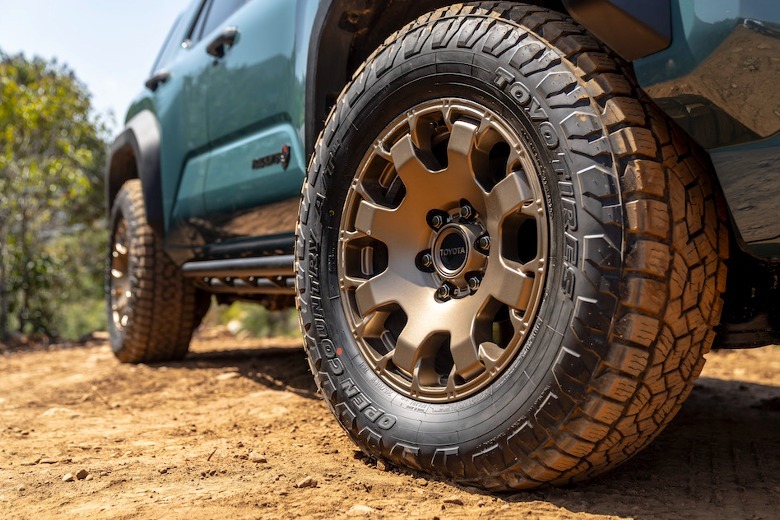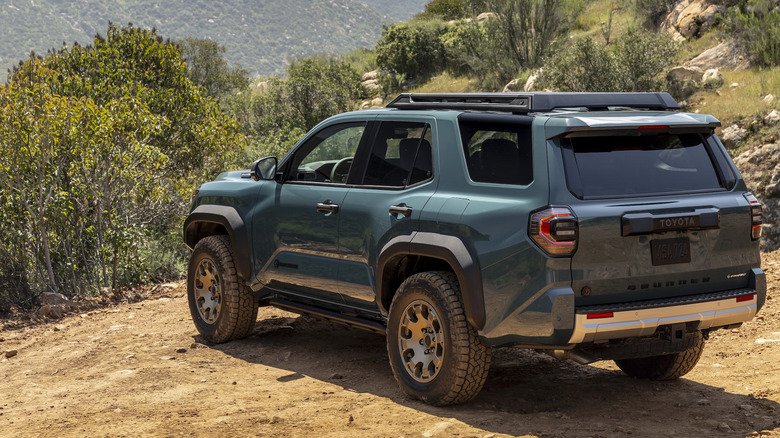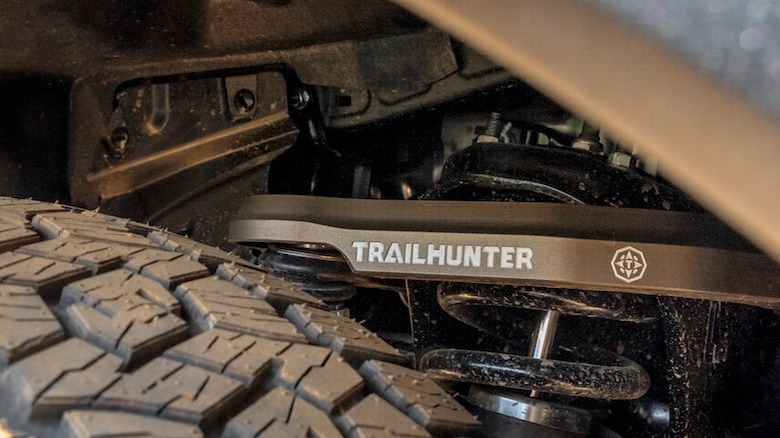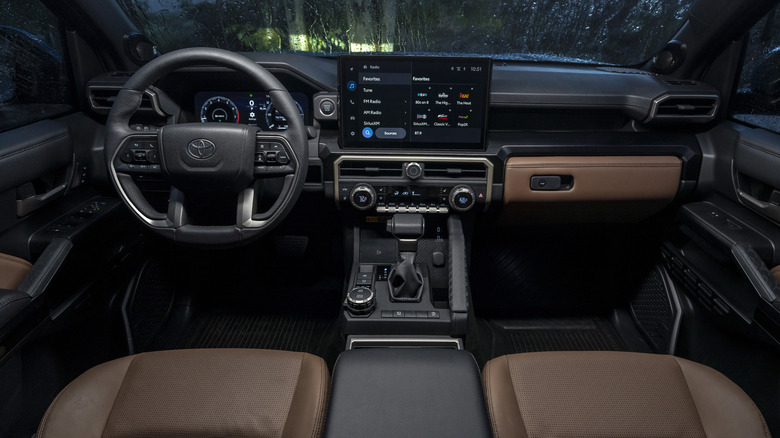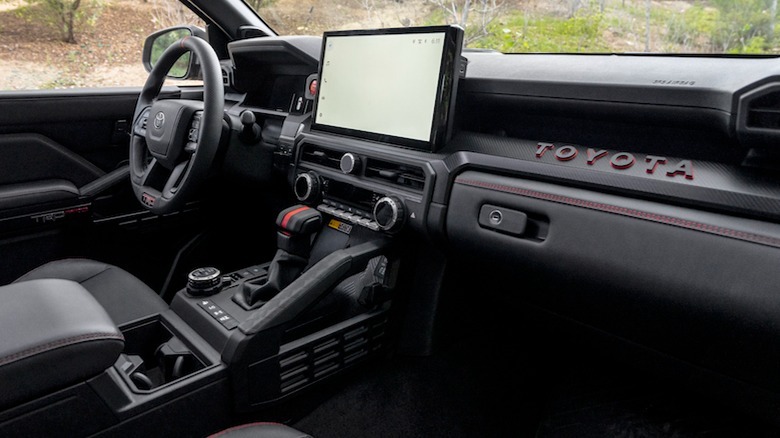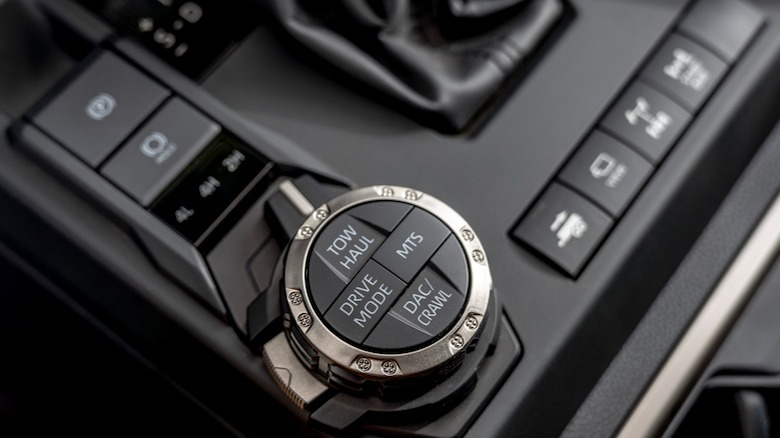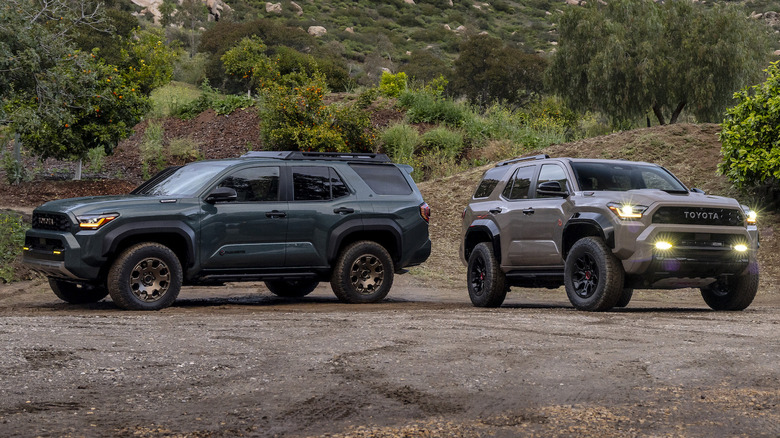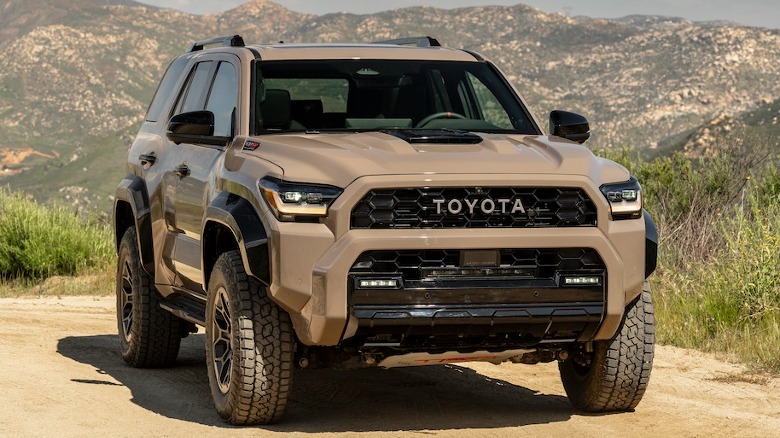Toyota's 2025 4Runner Is Finally Here: Official Details And Specs Revealed
You can be an icon, and still be long overdue for an update — that's the situation the 2025 Toyota 4Runner finds itself facing, as it makes its official debut today. Headed to U.S. dealerships in fall of 2024, the new 4Runner aims to continue its predecessors' reputation for rugged reliability, practical features, and plentiful off-road talent.
At the same time, though, the market has changed since the last iteration of the 4Runner went on sale, all the way back in 2009. Then, it was arguably enough to boast rock-solid build quality and a dependable naturally-aspirated V6; buyers weren't turned off by less-than-refined manners on the road. While the current-gen 4Runner may have proved its dependability credentials, its dated technology was looking increasingly out of place both in Toyota's own range, and in the SUV category generally.
The 2025 4Runner arrives to redeem that reputation. Boasting eye-catching styling — with the familial resemblance to the well-received 2024 Tacoma, 2024 Sequoia, and 2024 Tundra clear, not to mention the same TNGA-F platform underneath — along with modern safety, comfort, and convenience tech, the promise is the same sort of on/off road duality balance we've seen Toyota strike with other recent launches.
Two engines, but no more V6
As seen in the new Tacoma, the standard 4Runner engine will be an i-FORCE turbocharged 2.4-liter inline-four, producing 278 horsepower and 317 pound-feet of torque. Optional will be the i-FORCE MAX, a hybrid combining the turbo-four with electrification, and nudging the power numbers up to 326 horsepower and 465 pound-feet of torque in the process. Each out-performs the old 4Runner's naturally-aspirated 4.0-liter V6, which offered 270 horsepower and 278 pound-feet of torque.
Both of the new engines will be hooked up to a standard eight-speed automatic transmission — another marked improvement, compared to the ancient five-speed auto in the outgoing SUV. Despite the power difference, both the non-hybrid and the hybrid engines will be rated to tow up to 6,000 pounds.
There'll be nine trims in total: The SR5 will be the cheapest; it, like the TRD Sport and TRD Sport Premium will come with the turbo-four engine. The 2025 4Runner Limited, TRD Off-Road, and TRD-Off Road Premium will be offered with a choice of both engines. Finally, the TRD Pro, Trailhunter, and flagship Platinum spec will all get the hybrid engine as standard.
Bolder styling and real off-road talent
At first glance, Toyota's new SUV is clearly a 4Runner. There's a bold grille, angular styling, and flared wheel arches, with hints of the Tacoma that the new SUV was designed alongside. At the back, the power drop-down rear window is standard.
Underneath, the TNGA-F global truck platform uses a boxed high-strength steel-ladder frame, paired with double wishbone front and multi-link coil rear suspension. The result, Toyota says, is a noticeable uptick in ride quality. That's something drivers of the outgoing 4Runner will probably appreciate.
However, off-road talent hasn't been overlooked. There's an optional stabilizer bar disconnect, and an available Multi-Terrain Monitor system of around-truck cameras for full awareness. Toyota will offer 2WD, part-time 4WD, and full-time 4WD options. The 4Runner 2WD will have an automatic limited-slip differential (Auto LSD); the 4WD versions will get that, plus Active Traction Control, and an electronically controlled two-speed transfer case with high/low range.
2025 4Runner Trailhunter cranks things up to 11
Up to 32-degree approach and 24-degree departure angles will be offered, trim-depending. The TRD Off-Road, TRD Pro, and Trailhunter trims will get an electronic locking rear differential; the Limited with the hybrid engine will be offered with a full-time 4WD system with center-locking diff. That'll be standard on the Platinum trim.
Toyota's Multi-Terrain Select system should make driving the new 4Runner off-road far easier than its predecessor. It offers settings for Mud, Dirt, and Sand, and works in both 4WD-High and 4WD-Low. A CRAWL Control system — effectively low-speed cruise control for off-roading — is offered, as is Downhill Assist Control.
Certain trims will be more rough and ready than others. Following on in the fashion of the Tacoma Trailhunter, the 2025 4Runner Trailhunter gets ARB Old Man Emu 2.5-inch forged shocks with rear external piggyback remote reservoirs, 33-inch Toyo Open Country A/T tires, and a high-mount air intake. It also rides 1.5-2 inches higher than the standard SUV, and gets a 20-inch LED light bar and 2,400W AC inverter.
A major cabin glow-up
Inside, some of the Tacoma and Tundra niceties have been carried over. The new dashboard does away with the old SUV's dreary tech, replaced with an 8-inch or 14-inch touchscreen running Toyota's latest infotainment system, with wireless Apple CarPlay and Android Auto. Three USB-C ports are standard, one mounted on the side of the touchscreen; two more in the rear are optional, as is a front wireless charging pad.
Physical controls for the HVAC system remain, along with a traditional gear shifter, while the same drive select switchgear in the Tacoma has been carried across, too. The second row of seats tumble for an uptick in cabin storage, and a third row of seats is optional. Final specs for cargo capacity will be shared closer to the 4Runner's launch.
The driver gets a 7-inch cluster display as standard, or a 14-inch version on higher trims. Keyless entry is standard, with Digital Key on certain trims as well. Toyota Safety Sense 3.0 — with pre-collision assistance with pedestrian detection, lane departure alerts with steering assist, adaptive cruise control, lane tracing assist, Proactive Driving Assist, and auto high beams — is standard on all 2025 4Runner grades. Options include blind spot warnings and rear cross-traffic alerts.
Reliability and pricing are the two big questions left
The two biggest questions remain: price, and reliability. The former will be confirmed closer to the 2025 4Runner's arrival in U.S. dealerships in fall of this year. Given the new high-end trim options, and advanced features made available, it's likely that you'll be able to spend a whole lot more on a new 4Runner than you used to be able to.
Reliability, meanwhile, may take some time to shake out. Toyota is offering a 36 month/36,000 mile basic new vehicle warranty, while the powertrain gets 60,000 mile coverage. Any hybrid-related components are covered for 8 years/100,000 miles — aside from the hybrid battery which is covered for 10 years/150,000 miles. ToyotaCare, covering factory-scheduled maintenance for the first two years or 25,000 miles, is also included.
A cynic might say that Toyota couldn't please everyone with the new 4Runner. Long-time fans may well find the new SUV too tech-forward, but the automaker undoubtedly needed to embrace that if it wanted to grab a slice of the new truck audience. How well it succeeded at that balance, we'll find out later this year.
